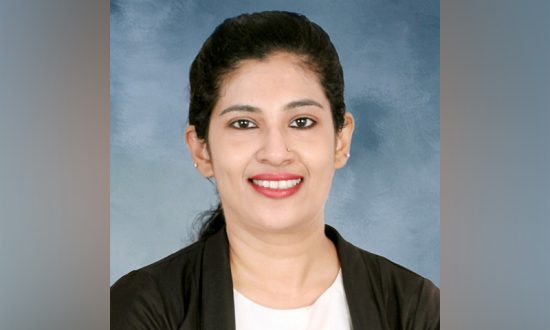Pooja is a digital evalengist at Lubrizol Corporation. Her customer centric data driven approach to her marketing strategies bring relentless success to the brands she has worked on. She ideated some award winning apps and products in highly competitive categories of Home appliance, Led Lighting, Consumer electronics, Fintech and now chemical industry.
Science today recognizes the Earth as a complex human-environment system, allowing us to better appreciate how our collective progress as human beings has been hampered by the methods we have used to achieve it.
Education for sustainable development must address broader ethical problems such as human rights, supporting values, justice, and fairness. Respect for equality is bolstered by intercultural awareness. Empathy and collaboration are promoted via peace and conflict resolution. A rights-based education encompasses the concept of education for sustainable development, while also reinforcing the understanding that we all have a common destiny.
When governments are driven by the Sustainable Development Goals, they may lead the transformation of the world’s social, economic, and environmental situation toward universally positive outcomes. They must, however, accept that any transformation would include difficult choices and trade-offs.
Sustainable Development
The Brundtland Report, which warned of the negative environmental consequences of economic growth and globalization and attempted to find possible solutions to the problems caused by industrialization and population growth, introduced the concept of sustainable development for the first time in 1987.
Many of humanity’s problems, such as climate change, water scarcity, inequality, and hunger, can only be solved on a global scale and through the promotion of sustainable development, which includes a commitment to social progress, environmental balance, and economic growth. The United Nations approved the 2030 Agenda, which includes the Sustainable Development Goals, a call to action to safeguard the planet and ensure the global well-being of people, as part of a new sustainable development roadmap. Individuals, corporations, governments, and countries all across the world must work together to achieve these common goals.
Environmental Sustainability
Climate change, exacerbated by human activity, has a negative influence on people’s lives, ecosystems, and the economy. Among other interrelated impacts, sea levels rise, oceans warm, desertification destroys agriculture, and water shortage undermines expectations of improvement in the most disadvantaged regions.
Climate change is the most serious threat to life on this planet as we know it today. Since 1990, CO2 emissions have increased by almost 50%, adding to global warming and threatening the Paris Agreement’s objective of keeping global warming below 2°C.
The obligation to conserve natural resources and maintain global ecosystems in order to support health and wellbeing today and in the future is known as environmental sustainability. Because many decisions that affect the environment have a long-term impact, one of the most important aspects of environmental sustainability is its forward-thinking nature.
Environmental sustainability standards vary widely depending on local economic, social, and environmental situations. Environmental sustainability standards vary widely depending on local economic, social, and environmental situations.
However, research suggests that in order to achieve environmental sustainability, a broader, global set of policies or a stronger commitment from businesses themselves may be required. According to a study published in Harvard Business Review, multinational corporations effectively control emissions in nations with rigorous environmental regulations, but they may emit more in countries with more lenient regulations.
Social Sustainability
The ignored aspect of sustainability is social sustainability. However, throughout the last few decades, our world has been only concerned with economic sustainability. Despite the fact that this method has resulted in widespread material welfare in some parts of the world, a substantial portion of the world continues to struggle to make ends meet. The current financial crises are fuelling questions about whether economic development can be automatically considered as a self-evident good, even in the wealthier parts of the world. Meanwhile, the ecological footprint is predicted to substantially increase, accompanied by resource strain, as a result of population expansion and concurrent increase in wealth, even in certain developing countries. This necessitates global action.
Some developing countries are putting resources into mastering industrial design skills. Furthermore, they have the ability to develop natural and renewable resources like natural fibres. These raw minerals have the potential to help people in these countries maintain their social stability. Millions of farmers already rely on these fibres for their livelihood. Industrial designers can help to the quality of life of millions of poor people by creating designs that are suited for the local context using proper legislative measures and “scientific design” methodologies.
Economic Sustainability
ESG, or environmental, social, and governance practises, are commonly used to describe economic sustainability practises. Corporations use ESG to lower their environmental footprint or achieve other societal goals. SRI, or socially responsible investing, is related to this.
The most common definition of sustainability is meeting current needs without jeopardizing future generations’ ability to meet their own. In general, a corporation implements sustainable practises by lowering its consumption of finite resources or discovering alternative resources that are less harmful to the environment.
Sustainability refers to a company’s complete supply chain, and it necessitates accountability from the top down, all the way down to the suppliers and merchants. If producing something sustainably becomes a competitive advantage for supplying multinational firms, it may be necessary to reorganize parts of the global supply chains that have grown entirely on the basis of low-cost manufacturing. Of course, how aggressively firms embrace sustainability and whether it is a meaningful change of direction or just lip service will determine this outcome.
Summing Up
Sustainable Development is another name for environmentally sustainable economic growth. The goal is to establish balance between environmental, economic, and socio-political sustainability. Sustainable development constantly urges us to conserve and increase our resources by gradually altering how we produce and use technologies. Employment, food, energy, water, and sanitation should all be met by all countries. A healthy, safe, and clean environment is everyone’s right. Reduced pollution, poverty, and unemployment are all simple ways to do this.


